Pediments of the Temple of Aphaia
1/26
Earn XP
Description and Tags
Name | Mastery | Learn | Test | Matching | Spaced |
|---|
No study sessions yet.
27 Terms

Where is the Temple of Aphaia located?
On Aegina, an island polis in the Saronic Gulf
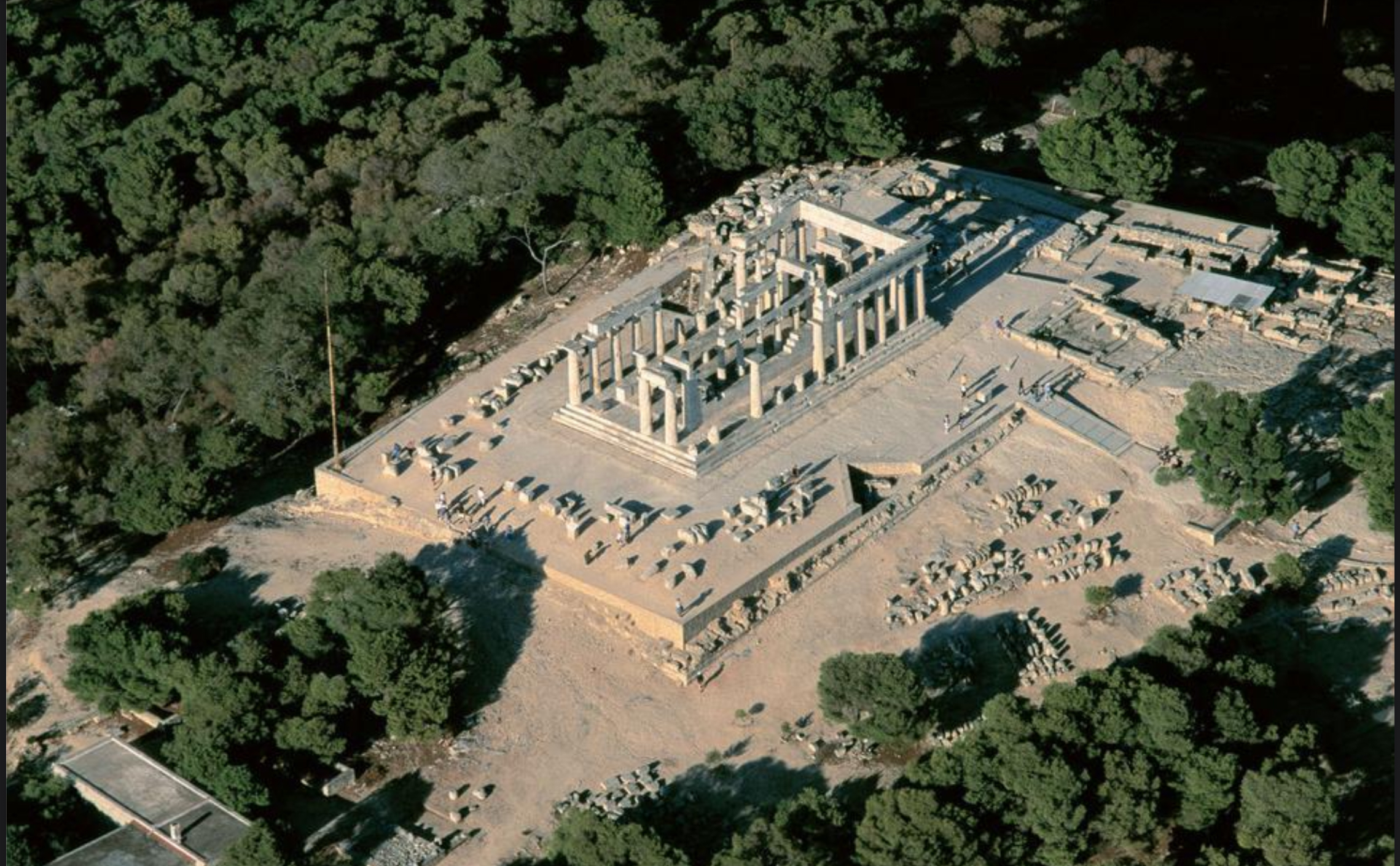
Whereabouts on Aegina was the Sanctuary of Aphaia situated?
It is situated on a rocky hilltop with panoramic views.
Who was Aphaia?
A local goddess associated with the sea, hunting and the agricultural cycle.
When is the temple dated to?
C.510-480 BC, Late Archaic
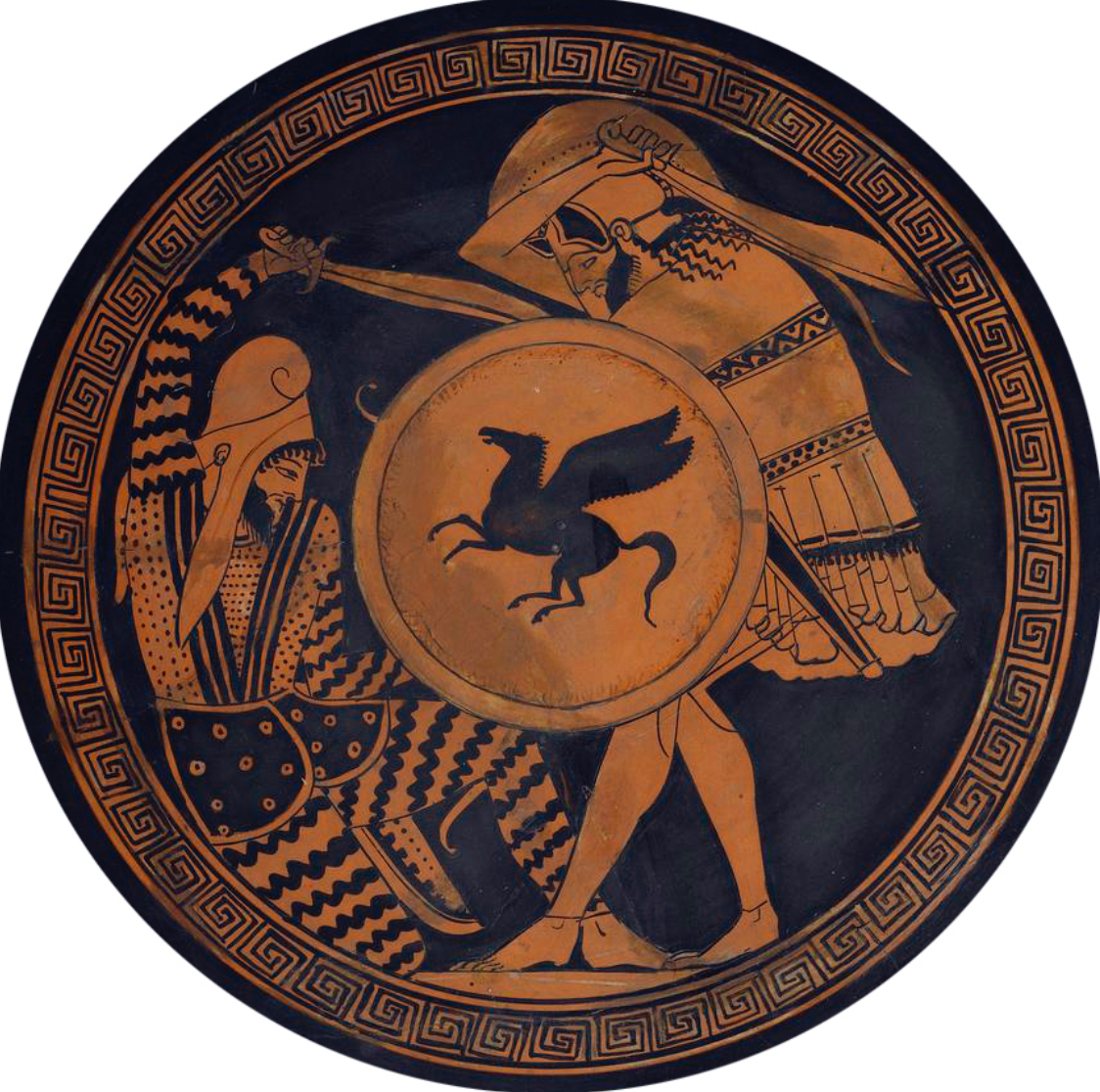
During what wars was the temple built?
The Persian wars (500-479BC)
What column structure is the temple?
Doric order
What material is the temple made from?
Limestone
How high about ground were the pediments?
5.2m high
How tall were the pediments?
1.74m high
How long were the pediments?
14m long
What are the pediments made from?
Painted Parian marble with red for the earth and blue for the sky in the background.

What is the date of the West pediment?
C.510-500BC, late archaic period

What is depicted on the West Pediment?
The sack of Troy led by Agamemnon and Ajax, son of Telamon.

Who is displayed at the apex of both the pediments?
Athene

How is Athene characterised on the west pediment?
Her patterned aegis with a detailed hem line
Spear, helmet and shield
Very good unity of theme as she supports the Greeks during the Trojan War
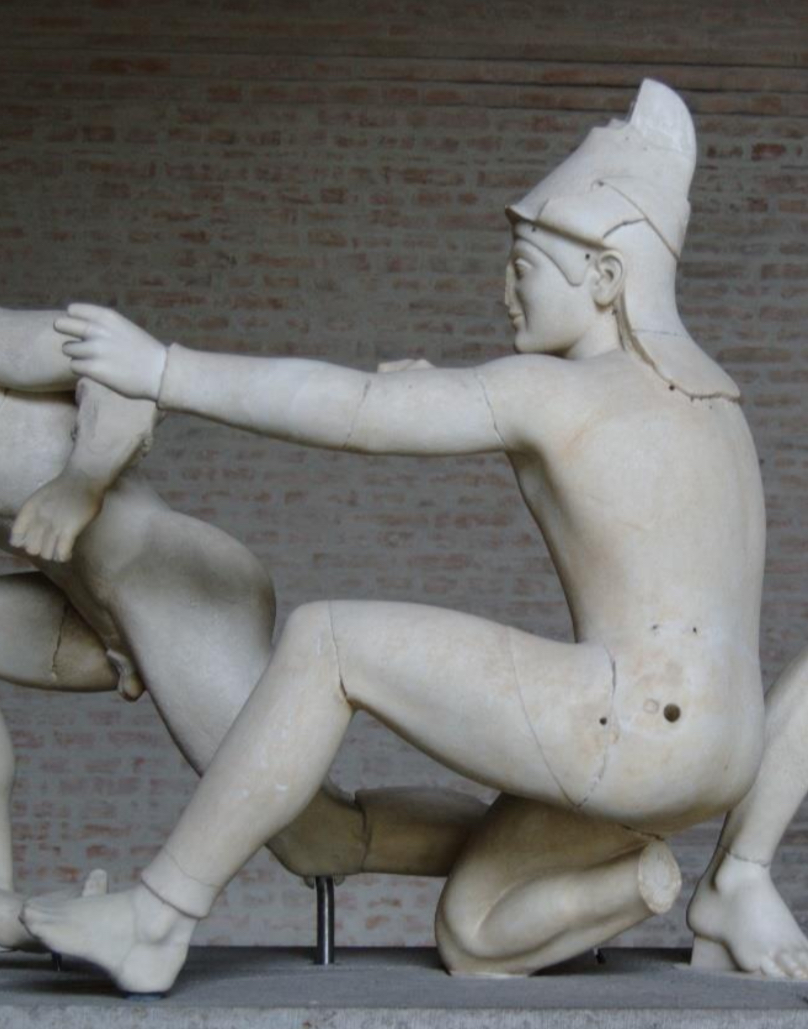
Who is the archer portrayed to the left of Athene on the west pediment?
Paris
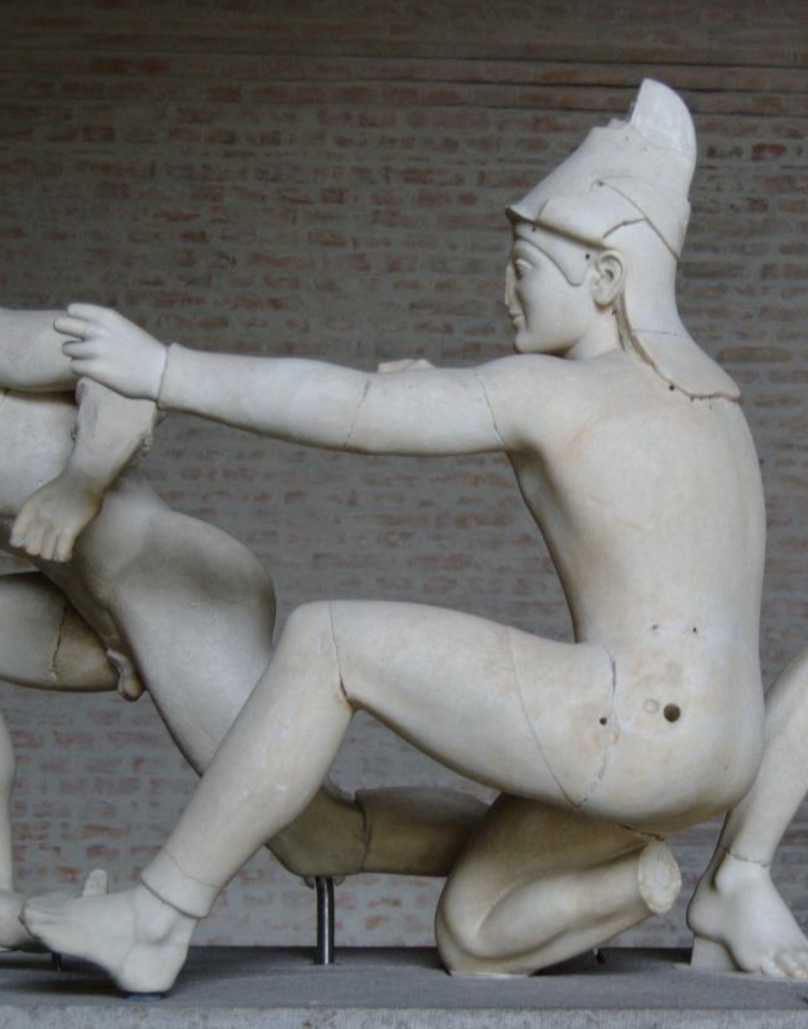
How is detail created in the figure of Paris on the west pediment? (4 POINTS)
The dynamic action pose conveys a narrative of Paris caught in movement about to release the arrow- Kneeling pose, raised foot, straight arm
Alert and attentive facial expression with a stylistic archaic smile
Remains of polychromy show he was portrayed wearing a cat suit showing ethnic characterisation
Missing bow undermines the narrative

How is detail created in the dying warrior from the West Pediment? (5 POINTS)
Smooth anatomical transitions in the abdominals and pectorals
Advanced asymmetric arm pulling bronze arrow from his chest- use of multimedia
Long beaded hair with a volute fringe- Typical geometric archaic feature
Crossed legs create multiple planes- Knees bent over his left leg propped up on his left arm
Fits acute corner with the reclining pose and dying narrative
What makes the dying warrior from the west pediment unrealistic? (2 POINTS)
The archaic smile is not believable since he is dying BUT this piece is not an attempt at naturalism it is a symbol of a fallen warrior and highly stylised to the period
The leisurely reclining pose appears too relaxed and lackadaisical for a dying man

When is the east pediment dated to?
C.490-480BC, Early Classical period

What is depicted on the east pediment?
The sack of Troy led by Heracles and Telamon

How is detail created in the figure of Athene on the East pediment? How is she typical to the early classical period?
Unfortunately she is severely damaged so only her head remains:
Austere severe facial expression e.g. heavy rounded chin

Who is the archer depicted to the right of Athene on the east pediment?
Herakles

How is detail created in the figure of Herakles?
Muscle definition in his arm creates a richer narrative showing the strain as he pulls the string on his bow
The hem of his armour curves naturalistically around his body
Dynamic action pose further reinforces the narrative
Lion skin on his head characterises him
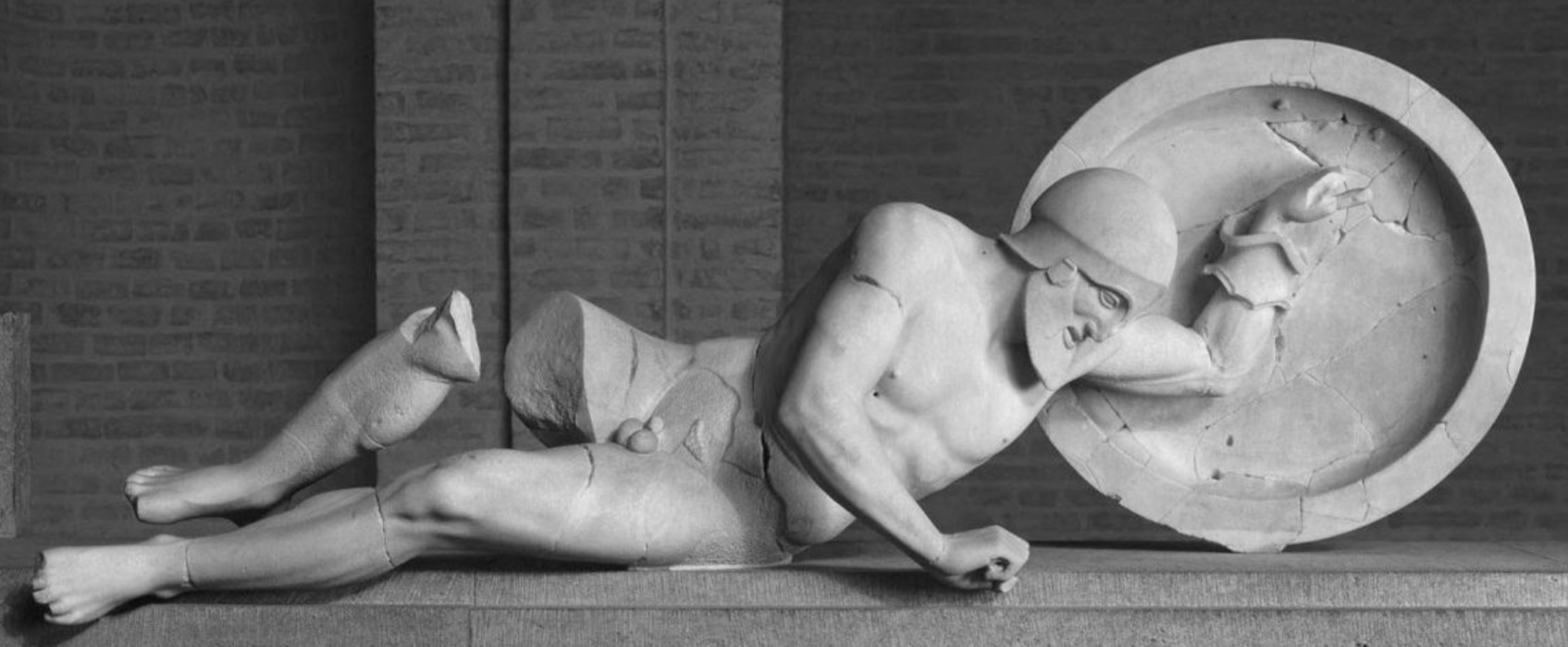
How is detail created in the dying warrior from the East pediment?
The shielded supports the dying warrior whilst simultaneously fitting the narrative and filling the triangle
The limp hand clutching onto the shield for support evokes pathos and reinforces the narrative
The action arm, with defined tendons and veins, pushes down his sword in an attempt to try and pull himself up
More accurate anatomy e.g. shins, muscles, veins
Severe style face with heavy eyelids and beard
Twisting reclining pose seen in the toned torso
Tense hand clenched in a fist
Scholarly Quote
What does Woodford say about the pediments?
‘The key solution they (Greek sculptors when filling pediments) devised lay in the choice of subject: a theme of violence presided over by a god’
Scholarly Quote
What does Barringer say about the pediments?
‘The sculptures display the experimentation that marks the period of stylistic change from archaic to Classical style’